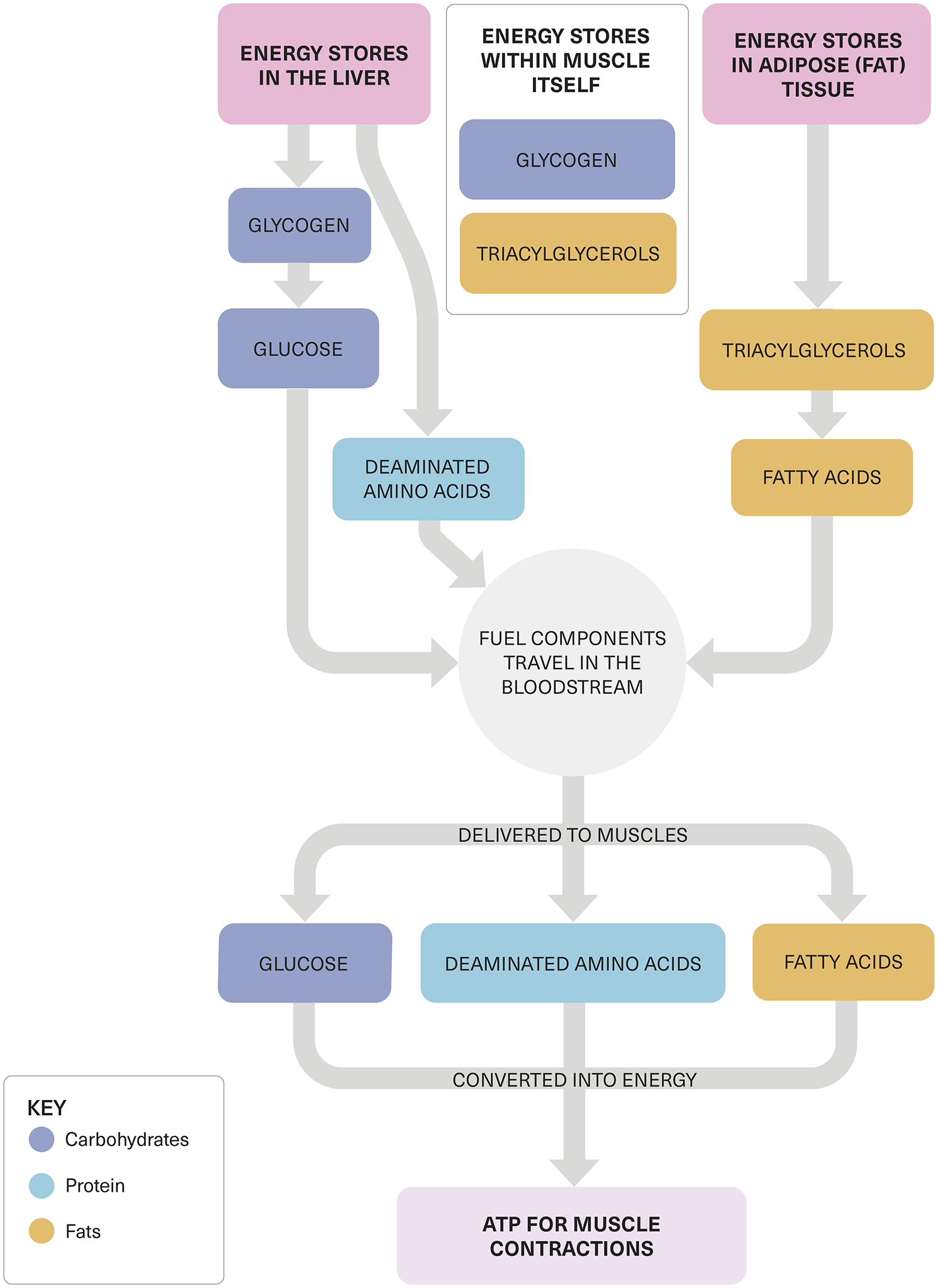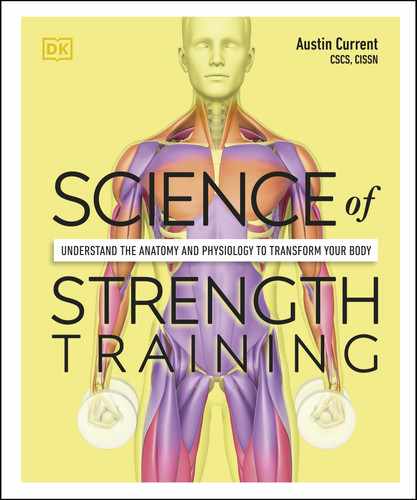Fuels for strength training
The term “macronutrient” may not be familiar, but you’ve probably heard of the three types: carbohydrates, fats, and protein. The calories within these macronutrients are released for energy to be used in chemical reactions in the body, including powering muscles to work against resistance. There are also “micronutrients”—the vitamins and minerals crucial to a wide and varied range of body processes.
MACRONUTRIENTS
Each of the three macronutrients is made up of components that can be assembled and then broken down to facilitate energy production—a process called bioenergetics (see Powering Muscle Action). Carbohydrates exist as glucose but are also stored in the form of glycogen (in muscles and in the liver). Proteins are made from amino acids. Fats exist as triacylglycerols and free fatty acids.
Macronutrient fuel sources
Whether the fuel comes in the form of carbohydrates, proteins, or fats, the body breaks it down and delivers components to the muscles in the blood. Muscle cells use these fuels to make energy—ATP. In addition to glycogen and triacylglycerols, muscles have stores of ATP and amino acids.

n Double-tap image to read the labels
Carbohydrates
In strength training, the predominant source of fuels comes from carbohydrates, stored in the form of glycogen and converted into energy through anaerobic metabolism. Eating carbs is key to replenish glycogen stores between training sessions to ensure adequate recovery and subsequent performance. Although your body can manufacture glucose from protein and fat, carbohydrates should make up the largest percentage of your daily energy requirements—especially if you are strength training. Carbs are responsible for as much as 80 percent of ATP production during strength training.
Protein
Dietary protein is essential to life and the maintenance of health, especially when considering its importance in building and maintaining muscle; the growth and repair of tissues and cells; and structural roles in connective tissue, bones, and organs. Unlike carbs and fats, the body does not have reserves of protein to use when availability is low, which is why it is crucial to eat enough protein every day. Twenty amino acids are used in human bodily functions; these can be further broken down as essential and nonessential. Essential amino acids have to be consumed in our diet, while the body can synthesize nonessential acids from other protein sources.
Fat
Fat, also known as lipid, is an essential nutrient that plays a vital role in many body functions, including the protective cushioning of internal organs and nerve signal transmission, assisting the absorption of vitamins, and helping facilitate the production of cell membranes and hormones. In the body, fat is stored in adipose tissue. Adequate fat intake has been shown to have an impact on testosterone levels, playing an important role in building muscle and regulating metabolism. Dietitians recommend that the majority of your fat intake comes from high-quality essential fatty acids, especially polyunsaturated fatty acids.
![]() Micronutrient magic wands
Micronutrient magic wands
Micronutrients are the vitamins and minerals required by the body in “micro,” or small, amounts compared to macronutrients. The World Health Organization has labeled micronutrients the “magic wands” that help our body produce enzymes and hormones needed for growth and development. Vitamins and minerals play an important role, helping us best prepare for the physiological demands of everyday life and reducing the risk of age-related decline. The more active you are, the greater the need for you to consume a wide variety of micronutrient-rich foods such as fruits and vegetables. Research from 2018 shows it’s best to consume micronutrients within foods rather than simply topping up levels via supplements.



